If you were to close your eyes and picture a person who is addicted to drugs or alcohol, who would you imagine? Because of Hollywood depictions and long-established stereotypes, many might conjure images of poor homeless junkies who are dirty, lazy and living a life of crime to feed their habits. However, research over the last decade has shown that these preconceived notions of what an addicted person looks like are outdated and incorrect.
Addictions affect people of all ages, races, genders and from all walks of life. While affluence, money and a healthy environment may play roles in helping people in addiction recovery, there’s little evidence that they provide any protection from developing a substance use disorder (SUD). In this article, we will examine how the demographics of addiction have evolved over the last few decades and how stereotypes about an addicted person’s characteristics are inaccurate.
Debunking Old Drinking Stereotypes
Of the more than 24 million Americans addicted to alcohol, most don’t fit into the traditional stereotypes of addiction many have heard, such as:
It is these stereotypes and others that allow high-functioning alcoholics to remain in denial about their problem usage. Contrary to popular belief, most people with an alcohol use disorder (AUD) are not homeless and jobless. They aren’t getting intoxicated in dark alleys, waiting for someone to rob to feed their addictions. You don’t have to look far to see very successful people abusing alcohol.
A 2007 study conducted by the National Institute on Alcohol Abuse and Alcoholism (NIAAA) went a long way in showing that there are multiple types of alcoholics, most of whom don’t fit commonly held stereotypes. It focused on 1,484 survey respondents who met the diagnostic criteria for alcohol dependence. The sample included people who were in treatment as well as those who were not seeking it. The researchers were able to identify five subtypes of alcoholics based on respondents’ family histories, age of onset of regular drinking and alcohol problems, symptom patterns of alcohol dependence and abuse and the existence of any mental disorders or additional SUDs.
Subtypes of Alcoholics
What this study suggested, despite a limited sample size, was that a large portion of alcoholics do not have criminal histories and are not living destitute lives.[2] Additionally, many people with AUDs do not seek treatment until they have sunk to the chronic severe stage of alcoholism. Many are in denial because they do not fit the stereotypes and find multiple reasons to explain away alcohol abuse.
It’s important to note that while high functioning alcoholics don’t have the same physical, mental, employment, financial and family problems as low-functioning ones, it could just be a matter of time. As addiction continues to progress in an individual, a slow breakdown of familial support and an erosion of mental health, physical wellbeing, and work performance are almost certain to follow. Putting it plainly, a high functioning alcoholic today could easily be a low functioning one down the line.[3]
The Closing Gender Addiction Gap
Fairly or unfairly, addiction has always been considered to be a man’s disease. This is why research about substance abuse and addiction-focused on men instead of women all the way through the 1970s and 80s, until researchers began realizing how little was known about women and addiction. In 1993, the National Institutes of Health (NIH), one of the primary authorities on addiction studies, was mandated by law to include female participants and research in all studies.[4]
Since then, we’ve learned considerably more about the substance-abusing tendencies of females and that addiction can be even more harmful to women than men. Men are still the biggest abusers of drugs and alcohol, but that gap has narrowed considerably. Surveys from the 1980s showed that the U.S. male/female ratio of AUDs were about 5:1,[5] whereas surveys from the 21st century report a ratio of approximately 3:1.[6]
According to a 2011 report by the World Health Organization (WHO), male alcoholism rates are more than double that of females (5.5 percent to 1.9 percent),[7] but other reports have suggested that these rates are equivalent among younger adults and adolescents.[8],[9] One theory for why rates of addiction have risen among women involves them gaining more freedoms, entering the workforce in greater numbers and being in charge of their own finances and lives.
When a lack of financial freedom is coupled with childcare and housekeeping duties (which are often heaped on women more so than men), opportunities for substance abuse become more scarce. As recently as the 1960s and 70s, men were still the primary breadwinners in the home and had more control over finances than women. It has been shown that in recent years, women have become the primary financial decision-makers in American households.[10] As women’s rights have been advanced, so have their opportunities to use drugs and alcohol. This theory is supported when one takes a look at the substance-abusing habits of women in developed nations compared to those in developing nations (who generally have fewer rights and less financial control).[11],[12]
Beyond attaining greater financial liberties, more women have been abusing substances because they have found more access to them. There’s less of a men’s club surrounding alcohol and drug abuse than in the past. A 2000 study by the National Institute on Drug Abuse (NIDA) suggested that the gender differences in the prevalence of drug and alcohol abuse had more to do with access rather than increased susceptibility.[13] The theory sounds accurate when coupled with the fact that in the 1950s, male/female ratio of alcohol initiation in the 10-14-year-old age group was 4:1, whereas, in the 1990s, it was 1:1.[14] This illustrates how female opportunities to abuse alcohol have increased with the decades and coincides with the closing gender addiction gap.
Substance Abuse in Women Can Be More Dangerous
Because of unfair stigmas and erroneous assumptions about substance abuse, women often face more shame for heavy drinking than men. This leads women to drink in private and to go to greater lengths to hide any alcohol abuse. As a result, women who do have drinking problems face more obstacles in accessing substance abuse treatment and are less likely to seek help than men.[15]
Research has also found that women actually outpace men in the abuse of benzodiazepines and other kinds of tranquilizer prescriptions and over the counter drugs. This is partially due to women being more likely to be diagnosed with mental health illnesses than men.[16]This is even more pronounced in affluent countries, where the overall diagnoses of mental illnesses like depression are higher.[17]
One of the most dangerous aspects of substance abuse for women is the issue of telescoping; or the accelerated progression from first use to dependence and then admission into treatment. Studies have consistently shown that women progress more quickly than men when using opioids, cannabis or alcohol. When a woman does enter treatment for substance abuse, she often presents more severe symptoms of addiction and dependence than her male counterparts, despite having used less of the substance and for a shorter period of time.[18]
Heroin’s Journey from the Inner Cities to the Suburbs
There are many myths that also surround heroin addiction. Stereotypes associated with heroin use began in the 1960s when the drug was plaguing male minorities in urban inner-city areas. It was considered a poor man’s drug at the time, not associated with upper-class Americans enjoying the luxuries of wealth. With lives so great and fulfilling, who needs to use life-threatening drugs like heroin?
The demographics for heroin use and abuse began shifting as prescriptions for opioids increased. Since 1999, the number of opioid prescriptions written has quadrupled, while the nation endured a record number of accidental drug overdoses in 2014 – with over 60 percent of them coming as the result of opioid abuse. The Centers for Disease Control and Prevention (CDC) have linked prescription opioid abuse to heroin abuse, finding that people who are addicted to prescription painkillers are 40 times more likely to become addicted to heroin.[19]
Changing Face of Heroin Addiction
From the tragedy of Phillip Seymour Hoffman’s heroin overdose,[20] to Vermont Governor Peter Shumlin (D) devoting his entire 2014 state of the state address to what he termed a “full-blown heroin crisis,”[21]there have been many signs showing that today’s heroin users don’t look like or come from the same places they did in the 1960s.
One recent study analyzed survey responses from patients in over 150 different treatment centers across the country, involving 2,797 respondents. It examined participants’ genders, a decade in which first opioid use occurred, race/ethnicity and age of initiation. The results confirm a changing demographic:
The researchers were careful to point out that the survey results could have been influenced by participants’ abilities (or lack thereof) to recall details about the onset of their drug use from decades past.[22]
Discussion and Conclusion
Regardless of the things we think we know about who people with addictions are, what they look like and where they come from, it’s important to remember that these are nothing more than preconceived notions. Despite what television, movies, and personal experiences may tell you, it’s very difficult to distinguish a person with an addiction from one without.
Just because a person seems affluent, happy and healthy, it does not mean that this is actually the case. We all struggle with inner battles that many in the outside world (even those we consider close friends and family members) know nothing about. To try to make assumptions about what a person with an addiction does or doesn’t look like is akin to trying to determine whether a person looks smart or doesn’t look smart. It’s impossible to tell what’s on the inside.
Spending time around a person and observing his or her habits over a long period of time is the only way to truly know whether he or she is struggling with an addiction. Addictions don’t pick and choose who to target based on life circumstances. A professor at a prestigious university, a famous actor or an accomplished doctor could be just as likely to struggle with alcoholism or drug addiction as anyone from any walk of life. By avoiding stereotypes and keeping an open mind as to who can develop addictions, we can diminish the negative stigma and eliminate reasons for denial, making it more likely for people to seek treatment.
This article was written by addiction care experts at Behavioral Health of the Palm Beaches. We are committed to offering the most comprehensive addiction treatment services in the nation and being thought leaders in the addiction recovery community.
[1] http://www.ncbi.nlm.nih.gov/pmc/articles/PMC2094392/
[2] https://www.nih.gov/news-events/news-releases/researchers-identify-alcoh…
[3] http://drugabuse.com/library/high-functioning-alcoholic-addict/
[4] https://grants.nih.gov/grants/funding/women_min/women_min.htm
[5] Helzer JE, Burnam A, McEvoy LT. Alcohol abuse and dependence. In: Robins LN, Regier DA, editors. Psychiatric disorders in America: the epidemiological catchment area study. The Free Press; New York: 1991.
[6] Hasin DS, Stinson FS, Ogburn E, et al. Prevalence, correlates, disability, and comorbidity of DSM-IV alcohol abuse and dependence in the United States: results from the National Epidemiologic Survey on Alcohol and Related Conditions. Arch Gen Psychiatry.
[7] WHO. Global status report on alcohol and health. Switzerland: World Health Organization; 2011
[8] http://www.ncbi.nlm.nih.gov/pmc/articles/PMC2746371/
[9] http://www.ncbi.nlm.nih.gov/pmc/articles/PMC2756494/
[10] http://www.nielsen.com/us/en/insights/news/2013/u-s–women-control-the-p…
[12] thefix.com/content/addiction-global-gender-gap-women-equal-opportunity8151
[13] http://archives.drugabuse.gov/NIDA_Notes/NNVol15N4/Prevalence.html
[14] http://www.ncbi.nlm.nih.gov/pmc/articles/PMC3124962/#R5
[15] http://pubs.niaaa.nih.gov/publications/arh291/55-62.htm
[16] http://www.who.int/mental_health/prevention/genderwomen/en/
[17] http://articles.latimes.com/2011/jul/26/news/la-heb-depression-wealthy-c…
[18] http://www.ncbi.nlm.nih.gov/pmc/articles/PMC3124962/#R5
[20] http://articles.latimes.com/2014/feb/28/entertainment/la-et-mg-philip-se…
[21] https://www.washingtonpost.com/blogs/govbeat/wp/2014/01/10/vermont-sessi…
[22] http://archpsyc.jamanetwork.com/article.aspx?articleid=1874575
This article was written by addiction care experts at Behavioral Health of the Palm Beaches. We are committed to offering the most comprehensive addiction treatment services in the nation and being thought leaders in the addiction recovery community.



